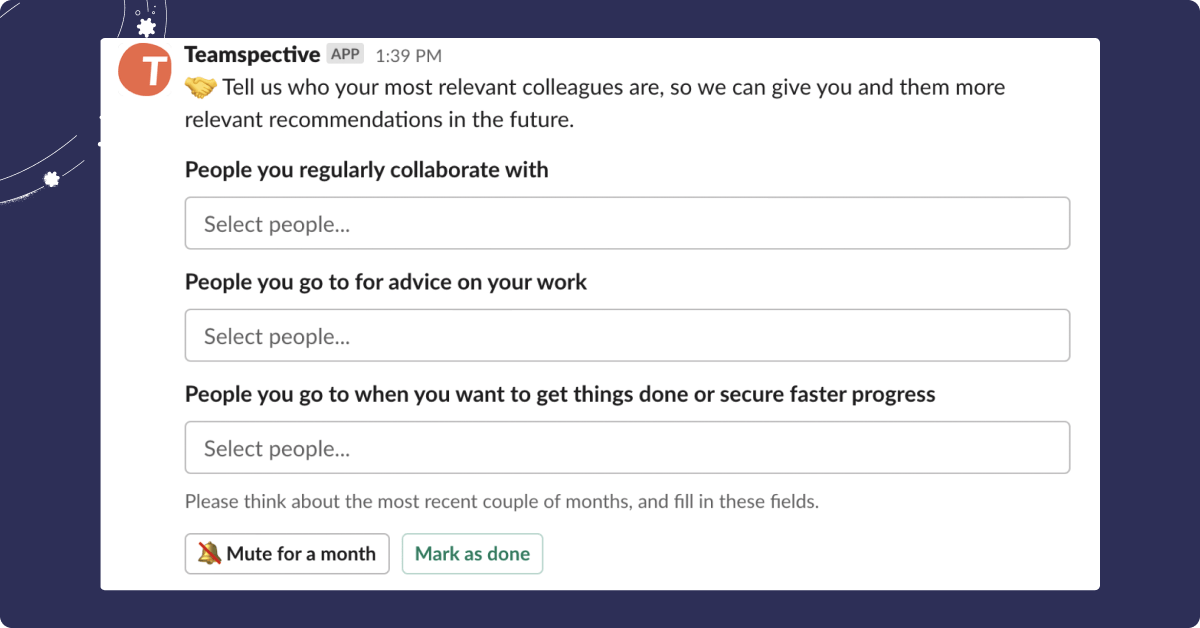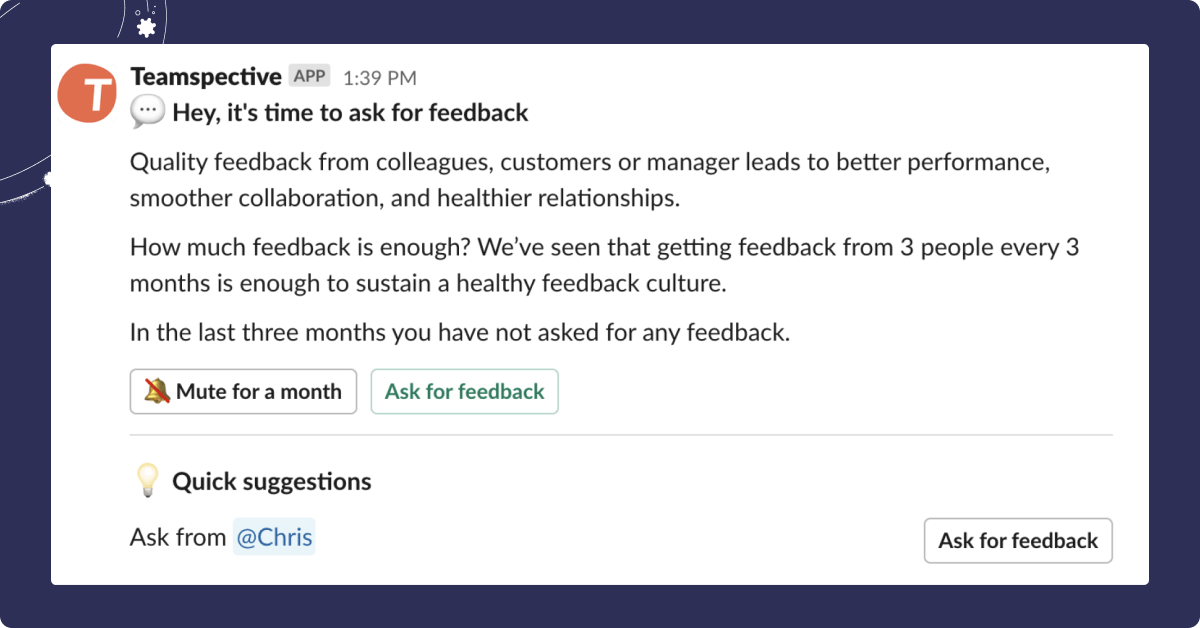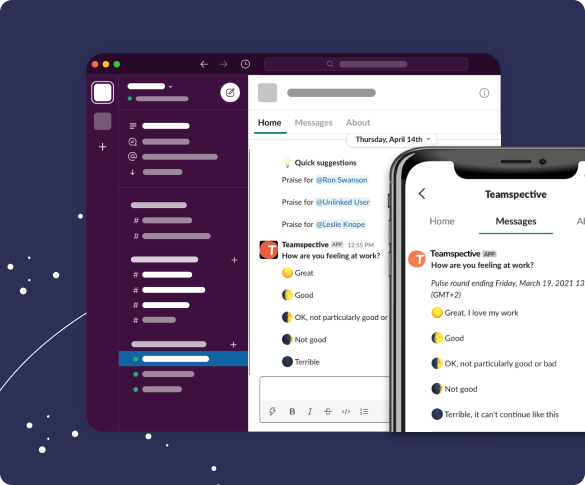Boost Employee Engagement in Cross-Functional Teams
August 18, 2022Today the role of cross-functional team has drastically increased. This trend presents unique challenges and opportunities related to employee engagement. In this article, we explain what cross-functional teams are, look at the challenges they face, and explore how simple and interactive feedback processes can help managers boost employee motivation, wellbeing and collaboration.
Today, the role of cross-functional teams has drastically increased. This trend presents unique challenges and opportunities for employee engagement. In this article, we explain what cross-functional teams are, look at the challenges they face, and explore how simple and interactive feedback processes can help managers boost employee motivation, wellbeing and collaboration.
What are cross-functional teams?
Let’s make sure we are on the same page! Cross-functional teams are groups of employees from different functions and backgrounds who come together to work on a certain project, either customer-facing or internal one. Often, these teams are called dynamic teams, since the members may disband after the project is completed and later form another team with a new group of people.
What are the challenges with employee engagement in cross-functional teams?
Firstly, when you work in a cross-functional team, it’s easy to feel like you’re on your own. Managers often cannot have full visibility on the projects their employees are working on, hence weekly 1-1s become less helpful as a way to get feedback from your superiors. While projects may have an assigned team lead, usually this person doesn’t have a direct responsibility for employee engagement.
Secondly, discussing feedback with colleagues may be inefficient, if team members are involved in different projects and don’t work closely with each other. Meanwhile, project-related calls are usually results-oriented and dedicate less time for feedback and improving collaboration.
Finally, if the project teams change frequently (which is often the case), it can be hard for employees to know from whom they should request feedback. On the managers’ and HR professionals’ side, it can feel challenging to coordinate this feedback process.
Why and how to build a successful feedback culture in cross-functional teams?
If organisational structure is not streamlined, it doesn’t mean that being aware of employees’ experiences is less important. There is actually a higher chance that dissatisfaction among certain teams goes unnoticed. The following actions can help turn the above-mentioned obstacles into opportunities.
1. Understand Your Organisation’s Network
To keep feedback processes meaningful, we recommend keeping a close eye on who collaborates with whom at a certain moment in time. Today, it can be done in an automated way.
For example, Teamspective automatically surveys users at regular intervals in Slack or MS Teams to ask with whom they are working closely right now! After that, this data is used to help each employee get meaningful feedback from their closest teammates.

Organisational Network Analysis helps keep a constant eye on the actual project teams (especially when these teams are regularly changing) and support your employee engagement initiatives.
Estimate your employee churn costs and savings potential
2. Ask for Feedback That Really Matters
To reflect on their performance and feel appreciated, people need meaningful feedback. At Teamspective, we found out that receiving written feedback monthly increases employee motivation by 20% and psychological safety by 35%.
The first step is to ask for feedback from the right people – as we discussed above.
The next step is to make feedback more meaningful by increasing the feedback quality. Creating an expectation of monthly feedback discussions helps establish a timely feedback routine. When feedback is focused on recent events (which are still remembered well), it also becomes more detailed and concrete. There are different ways to activate your people. Below, you can see an example of how we do it at Teamspective.

Just to be clear: by monthly feedback we mean asking 1-3 people for their top two points on certain topics. By having such a habit in place, you never again have to burden employees with a full-scale 360 feedback round where everyone is expected to give several feedbacks to 5-10 people at once.
3. Share Redirecting Feedback
Writing feedback itself can be the most difficult part. Focusing on the right things isn’t easy, and understanding what to write about can be even harder.
While writing feedback for another person, we first recommend defining the topic on which you would like to give feedback. For example communication, presentation tactics, project management, or another area of competence.
The second step is to logically structure your thoughts around this selected area. Share your observations neutrally, describe the potential impact of a certain action, then either make an actionable request or close your message in an encouraging way. Check out Teamspective’s Recipe for Perfect Feedback.
If you use Teamspective, this process is as guided and easy as possible. Feedback requests arrive into Slack, MS Teams, or email, and with one click you can start writing. While you write, the app provides guidelines for topic definition and shares questions one could answer to be as constructive and to the point as possible!
How else can Teamspective help cross-functional teams?
In this article, you have learnt the best practices for building a successful feedback culture in dynamic teams and where Teamspective’s feedback features can be helpful. Additionally, we help you listen to your people in nearly real-time with pulse surveys that can be answered directly in Slack or MS teams.

At Teamspective, we know the power of feedback, so be sure to check out Teamspective today.



